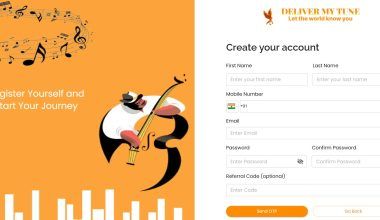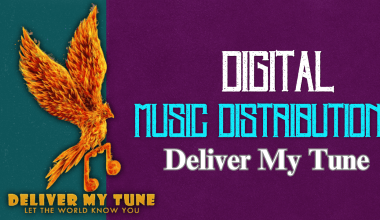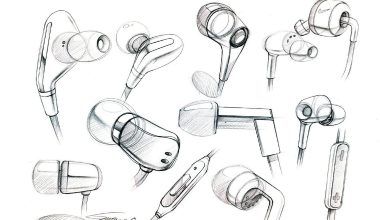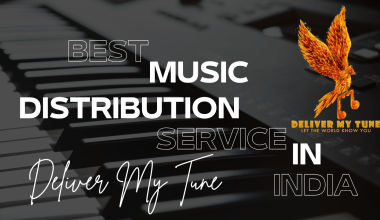Getting your music out into the world can feel overwhelming, especially if you’re an independent artist. But don’t worry! Distribute your single on iTunes as an independent artist is easier than you might think. With a bit of planning and the right approach, you can make your music available to millions of listeners globally.
Why Distribute Your Single on iTunes?
As an independent artist, making your music available on iTunes is a great way to reach new audiences. iTunes is one of the largest and most well-known music platforms, giving you the opportunity to earn revenue from sales and streams. Plus, having your music on iTunes adds a level of credibility to your brand.
Choosing a Music Distributor
The first step to distribute your single on iTunes is to choose a music distributor. Since independent artists can’t upload music directly to iTunes, you’ll need to work with a digital distribution service. Some popular choices include TuneCore, DistroKid, Delivermytune, and Amuse. Each of these platforms offers different pricing plans and features, so it’s important to do some research and find the best fit for your needs.
Preparing Your Single for Distribution
Before you upload your single, you’ll need to make sure everything is ready. This includes:
- High-Quality Audio: Ensure your song is professionally mixed and mastered.
- Cover Art: Your artwork should meet iTunes’ guidelines (minimum 3000×3000 pixels, no blurry images, and no copyrighted content).
- Metadata: This includes your song title, artist name, genre, and release date.
Taking these steps will make the distribution process smoother and help you avoid any delays.
Setting Up Your Release
Once you’ve chosen your distributor, it’s time to set up your release. Log in to your chosen platform and follow their instructions to upload your single. You’ll need to provide details such as:
- Your artist name and song title
- Release date and territories where you want your music to be available
- Whether the track is explicit or clean
Many distribution services also let you choose additional stores besides iTunes, such as Spotify, Apple Music, and Amazon Music.
Pricing and Royalties
As an independent artist, it’s important to understand how pricing and royalties work. Most distributors allow you to set your own price for your single. Keep in mind that iTunes takes a percentage of each sale, and your distributor might also charge fees. Make sure to read the fine print so you know exactly how much you’ll earn.
Promoting Your Single
After you’ve successfully distributed your single on iTunes, the next step is promotion. Simply uploading your music isn’t enough; you need to spread the word. Here are some effective ways to promote your music:
- Social Media: Share teasers, behind-the-scenes clips, and direct links to your song.
- Email Marketing: Reach out to your fans with updates and links.
- Collaborations: Work with influencers and other artists to expand your reach.
- Press Releases: Send out a press release to music blogs and media outlets.
The more effort you put into promotion, the more listeners you’ll attract.
Engaging with Your Audience
Building a loyal fan base is key to long-term success. Engage with your audience by responding to comments, sharing their posts, and offering exclusive content. This helps create a deeper connection with your fans and encourages them to support your music.
Monitoring Your Performance
Once your single is live on iTunes, it’s crucial to track its performance. Most distributors provide analytics tools that show you how many streams and downloads your song is getting. Use this data to understand what’s working and adjust your marketing strategy accordingly.
Leveraging iTunes Charts and Playlists
Getting your single featured on iTunes charts or playlists can significantly boost your visibility. Encourage your fans to buy and stream your song during the first week of release, as this increases your chances of charting.
Planning Your Next Release
After you’ve successfully distributed your single, it’s time to start thinking about your next release. Consistency is key in the music industry, so having a steady stream of new music will keep your fans engaged and attract new listeners.
Common Mistakes to Avoid
Many independent artists make mistakes when distributing their singles on iTunes. Here are some common pitfalls and how to avoid them:
- Ignoring Metadata Accuracy: Double-check all details to avoid errors.
- Using Low-Quality Artwork: Invest in professional cover design.
- Skipping Promotion: A strong promotional plan is essential for success.
By avoiding these mistakes, you can ensure a smooth and successful release.
Final Thoughts
Distributing your single on iTunes as an independent artist might seem complicated at first, but with the right approach, it’s entirely achievable. By choosing a good distributor, preparing your music properly, and promoting it effectively, you can reach new audiences and grow your music career.
Start today, stay consistent, and keep sharing your passion with the world. Your music deserves to be heard!
Related Articles:
For further reading, explore these related articles:
- How to Release Your Single on Gaana Effortlessly and Fast
- How to Release Your Single on Gaana Without a Label
For additional resources on music marketing and distribution, visit DMT RECORDS PRIVATE LIMITED.






